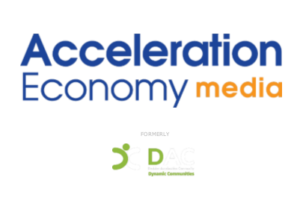Multi-Agent AI: Simplifying Complexity with the Microsoft Agent Framework

Managing multiple AI agents, juggling different tools, and integrating diverse models can get overwhelming quickly. For developers aiming to build robust, scalable AI solutions, orchestrating these moving pieces is both a challenge and a necessity. That’s where the new Microsoft Agent Framework steps in, offering a streamlined approach for building, coordinating, and scaling multi-agent systems across the Microsoft ecosystem.
Microsoft Agent Framework is a consolidation and evolution of the best ideas in agentic AI, designed to address pain points for both innovators and enterprises. It offers a unified, extensible, and production-ready platform that bridges the gap between research and deployment, making multi-agent AI systems easier to build, manage, and scale.
Why Multi-Agent Systems Get Complicated Fast
In modern enterprise AI, it’s rarely just one model or one tool. You might have a conversational bot, document summarization models, custom logic, and data connectors all running at once. Each component is powerful on its own, but coordinating its interactions, ensuring reliability, and maintaining security can quickly spiral out of control.
Here is a quick chart comparing the most popular AI agent frameworks nowadays:
|
Framework |
Focus & Strengths |
Orchestration & Extensibility |
Enterprise Features |
Integrations & Ecosystem |
Ideal Use Cases |
|---|---|---|---|---|---|
|
Microsoft Agent Framework |
Unified SDK, production-ready, seamless Azure/Fabric/Copilot integration, open standards |
Advanced multi-agent orchestration, extensible connectors (MCP, OpenAPI) |
Built-in observability, security, compliance, durability |
Deep integration with Microsoft Fabric, Logic Apps, Azure Functions, Copilot |
Enterprise AI, scalable multi-agent systems, automation |
|
AutoGen |
Experimentation, rapid prototyping, advanced agent design patterns |
Multi-agent runtime, flexible agent registration |
Limited enterprise features, mostly research-focused |
Integrates with Python ecosystem, open source |
Research, prototyping, custom agent workflows |
|
Semantic Kernel |
Production-ready SDK, memory connectors, planner, robust agent framework |
Modular connectors, planner for orchestration |
Enterprise compliance, multi-language support |
Microsoft ecosystem, Azure, OpenAI |
Enterprise apps, data-driven agents, compliance-heavy scenarios |
|
LangChain/LangGraph |
Graph-based workflows, stateful multi-agent orchestration, rapid experimentation |
DAG-based orchestration, modular tools |
Monitoring via LangSmith, less focus on compliance |
Large open-source ecosystem, Python, integrations |
Complex multi-agent tasks, rapid prototyping, evaluation pipelines |
|
CrewAI |
Lightweight, code-driven agents, simple orchestration |
Explicit agent roles, easy setup |
Minimal enterprise features |
Python ecosystem, open source |
Small-scale agent systems, quick automation |
|
OpenAI Function Calling/Agents SDK |
Structured agent runtime, API-first, easy external API/function calls |
Role assignment, tool triggers |
Security via OpenAI platform |
OpenAI ecosystem, API integrations |
API-driven agents, function orchestration |
In Summary:
- Microsoft Agent Framework stands out for its unified approach, deep enterprise features, and seamless integration with Microsoft’s cloud/data ecosystem.
- AutoGen and LangChain/LangGraph excel in experimentation and custom agent orchestration but lack built-in enterprise-grade features.
- Semantic Kernel offers a bridge between research and production, with strong compliance and integration for Microsoft environments.
- CrewAI is best for lightweight, quick agent setups.
- OpenAI Function Calling/Agents SDK is ideal for API-driven workflows and simple agent orchestration.
The Microsoft Agent Framework as a Unified Orchestrator
Microsoft’s Agent Framework is designed to be the central nervous system for your AI landscape. It’s an orchestrator that brings together agents (like Copilot agents or Fabric Agents), AI services, and business logic into a cohesive, manageable ecosystem.
The “Golden Path” architecture defined by Microsoft is all about best practices and out-of-the-box resiliency. Here’s what makes it a standout:
- Azure AI Foundry: Acts as a unified launchpad for setup, observability, and a suite of built-in AI tools. Think of it as your control tower for all things AI, providing visibility and easy management no matter how many agents or models you deploy.
- Agent Framework as Orchestrator: The framework coordinates tasks and communications between agents, handling failures, retries, and state management. It’s like having a conductor for your AI orchestra, ensuring every agent operates in sync and at scale.
- Native Integrations: Out-of-the-box hooks into Microsoft Fabric, Logic Apps, Azure Functions, and AI Search mean you can embed intelligence directly into business processes, automate workflows, and connect to data—without custom glue code.
- Secure and Custom Storage: The framework supports secure connections to Azure Key Vault, custom storage backends, and encrypted communications, so enterprise-grade security is baked in from the start.
- Extensible by Design: Need to add a third-party agent or connect with an external API via OpenAPI? The Agent Framework is built with extensibility in mind, supporting MCP (Multi-Cloud Protocol) servers and a variety of connectors.
Foundry Embedding with Microsoft Fabric Agents and Copilot Agents
One of the major strengths of the Agent Framework is its seamless integration with Microsoft Fabric Agents and Copilot agents. Microsoft Fabric is the company’s next-gen data and analytics platform, and its agents are designed to automate and orchestrate complex business workflows. By embedding the Agent Framework, developers can:
- Spin up custom AI agents that interact with Fabric’s data pipelines, automating data preparation, enrichment, and transformation tasks.
- Leverage Copilot agents for contextual assistance in apps like Word, Excel, and Teams, all managed under the same orchestrated framework.
- Ensure that agents, whether they’re working on data analytics or user productivity, are coordinated, monitored, and secured under one roof.
This means you’re not forced to choose between developing for Fabric, Copilot, or your own custom agents. The Agent Framework acts as the backbone, letting you plug in any agent and orchestrate workflows that span data, productivity, and business logic.
Practical Use Cases: From Automation to Enterprise AI
Imagine an enterprise scenario where you need to process incoming customer requests, analyze documents, trigger business workflows, and generate reports. With the Agent Framework:
- Requests are routed through Copilot agents for initial triage and summarization.
- Fabric agents pick up the data, enrich it, and trigger custom analytics pipelines.
- Logic Apps and Azure Functions handle notifications, escalations, and backend updates.
- All components are observable and manageable from Azure AI Foundry, with secure access to keys and storage.
The result? A scalable, resilient AI system that’s easy to manage, extend, and secure without the integration nightmares.
Looking Forward
As AI continues to evolve, the need for orchestrated, multi-agent systems will only grow. Microsoft’s Agent Framework, especially when paired with the power of Fabric and Copilot agents, gives developers a “golden path” for building enterprise-grade solutions without reinventing the wheel. If you’re ready to tame the complexity of modern AI, this framework offers the tools, integration, and security you need—right out of the box.

